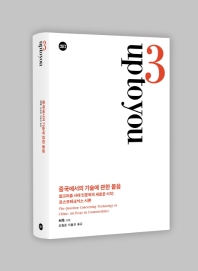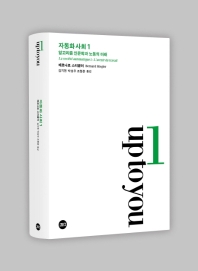상품상세 | 교보문고 - 중국에서의 기술에 관한 물음(양장본 HardCover)중국에서의 기술에 관한 물음- 알고리즘 시대 인문학의 새로운 시작: 코스모테크닉스 시론 양장본
허욱새물결2019.04.16
?
미리보기
책 판매 정보
36,000원32,400원
할인 10%↓ 적립 1800원 (5%)
eBook 상품꾸러미 상품원서22,850원

책 상세 정보
책 소개열기
동양에는 기술과 과학에 대한 사유가 존재하는가?
고대와 현대, 동양과 서양을 무소불위로 넘나들며 우리 시대의 핵심적인 고민들을 발본적으로 성찰하는 신진학자의 문제작!
오늘날의 중국은 진정한 G2인가? 경제적?군사적으로뿐만 아니라 또 다른 G2인 미국만큼 강한 ‘소프트파워’를, 정신문명의 현대적 우위를 갖고 있는가? 오히려 중국은 지금 미래 전망보다는 과거 복귀로 그것을 대신하려고 하지 않는가?
오늘날의 한국이 디지털이라는 첨단 기술과 함께 ‘한류’라는 전통적 춤과 놀이를 전 지구적으로 확산시킬 수 있는 이유는 무엇일까? 반면 첨단 기술 문명과 반대로 세계 최저 출산율, 세계 최고 자살률 등 정신의 빈곤 또는 황폐화에 의해 가장 크게 고통 받고 있는 이유는 무엇일까?
다시 1930년대의 하이데거처럼 기술을 그리고 ‘정신과 기술’을 문제로 설정해야 하는 이유가 여기 있다.
이 모든 것은 동양에서 근대(화)와 함께 신적 지위로 격상된 ‘기술’로부터 비롯되었지만 막상 그것은 하나의 ‘물음’으로 의식화되지 않고 기술적 무의식화되었다. 동시에 근대 이전에 동양 문명을 주도한 ‘하늘(우주)’과 ‘인간’은 무의식 속으로 억압되어 철저하게 망각되었다. 이 둘은 중국의 아편전쟁과 한국의 ‘개화’기에는 ‘동도서기’와 ‘중체서용’ 등으로 봉합되었지만 이후에는 ‘서기’와 ‘서용’만 남게 되었다. 인공지능과 로봇이 인간을 망각시키는 것이 아니라 대체 중인 지금, 그처럼 막다른 골목으로부터의 출구는 동양 철학과 서양 철학 어디서, 어떻게 찾을 수 있을까?
하이데거의 정치적 시도, 일본의 ‘근대의 초극’의 사상적 시도, 20세기의 포스트모더니즘의 이념적 시도, 중국의 신유학파의 동양적 시도 등이 모두 실패로 돌아간 지금, 알고리즘 시대의 우리의 새로운 사상적 지표는
어디 있을까?
동양과 서양을, 고대와 현대를, 말 그대로 동서고금을 종횡무진하며 사유의 향연을 펼치는 저자의 “중국의 기술에 대한 물음”은 바로 우리 현실에 대한 물음이기도 하다. 디지털이라는 첨단 기술 시대에 기술을 하나의 물음으로 만들어야 할 뿐만 아니라 그것이 하늘의 이치와 인간의 도리와 동떨어진 물음이 아님을 입증하는 것이 핵심적이다. 즉 ‘우리는 지금 행복하게 살고 있는가’ 하는 물음에 기술에 대한 물음을 합류시켜야 한다. 그것은 궁극적으로 삶에 대한 애티튜드에 대한 물음일 것이다. 그리고 그것은 철학이 항상 사유해온
것이기도 하다.
--------------------------------
목차열기
옮긴이 서문 … 27
서문 … 61
서론 67
1. 프로메테우스 되기 … 74
2. 우주, 우주론, 코스모테크닉스 … 85
3. 테크놀로지적 파열과 형이상학적 통일 … 101
4. 근대(성), 근대화 그리고 기술성 … 106
5. 무엇을 위한 ‘존재론적 전회’인가? … 113
6. 방법에 대한 몇 가지 노트 … 121
1부 중국의 테크놀로지 사상을 찾아서
7. 도와 우주: 도덕 원리 … 129
8. 폭력으로서의 테크네 … 138
9. 조화와 하늘 … 149
10. 도?-?기: 덕 대 자유 … 157
10. 1. 도교에서의 기와 도: 포정해우 … 171
10. 2. 유교에서의 기-?도: 예의 복원 … 179
10. 3. 스토아학파적 코스모테크닉스와 도교적 코스모테크닉스에
대한 논평 … 187
11. 저항으로서의 기-?도: 당대의 고문 운동 … 201
12. 초기 신유교에서의 유물론적 기氣 이론 … 206
13. 명대의 송응성의 기술백과사전에서의 기-?도 … 210
14. 장학성과 도의 역사화 … 220
15. 아편전쟁 후의 기-?도의 파열 … 224
16. 기-?도의 붕괴 … 231
16. 1. 장군매: 과학 그리고 삶의 문제 … 232
16. 2. 중국 본위의 문화 건설 선언과 그에 대한 비판자들 … 235
17. 니덤의 질문 … 238
17. 1. 유기적 사유양식과 자연의 법칙들 … 241
18. 모종삼의 응답 … 246
18. 1. 칸트의 지적 직관에 대한 모종삼의 전유 … 246
18. 2. 모종삼에서 양지의 자기?-?부정 … 257
19. ‘자연 변증법’과 형이상학의 종언 … 264
2부 근대(성)와 기술??-?의식
20. 기하학과 시간 … 273
20. 1. 고대 중국에서의 기하학의 부재 … 275
20. 2. 기하학화와 시간화 … 281
20. 3. 기하학과 우주론적 특수성 … 289
21. 근대(성)와 테크놀로지?-?의식 … 297
22. 근대(성)의 기억 … 305
23. 니힐리즘과 근대 … 317
24. ‘근대 초극’ … 325
25. 포스트모던의 상기 … 346
26. 귀향의 딜레마 … 361
27. 인신세에서의 중화미래주의中華未來主義(1839~2046년) … 369
28. 또 다른 세계사를 위하여 … 381
찾아보기 … 393
상품 상세정보닫기
ISBN
9788955594171(8955594178)
쪽수
400쪽
크기
156 * 219 * 32 mm / 763g
---------------------------------
원서/번역서
The Question Concerning Technology in China / Hui, Yuk
저자 소개닫기
저자 : 허욱
홍콩 출신의 철학자로 독일의 로이파나Leuphana대학교와 중국의 차이나 아카데미 오브 아트China Academy of Art에서 가르치고 있다. 국제시몽동연구센터 회원으로 본서 외에도 On the Existence of Digital Objects(2016)와 Recursivity and Contingency 등의 저서가 있다. 런던의 골드스미스에서 스티글러의 지도 아래 (기술)철학을 전공했다. 서양 형이상학의 존재?―?망각을 극복하려고 한 하이데거를 다시 기술?―?망각 테제를 통해 넘어서고자 하는 스티글러의 문제의식과 공명하고 또 대화하면서 ‘21세기의 기술 문명 극복’이라는 거대한 과제를 ‘동양’의 눈을 통해 글로벌하게 모색하고 있다. 우리 시대의 절박한 이 과제를 동서양을 두루 아우르면서 새롭게 사유하려는 선구적인 시도 중의 하나를 대변하는 이 신진학자의 새로운 시도는 중국과 일본을 비롯해 유럽 등 전 세계에 걸쳐 널리 주목받고 있다.
역자 : 조형준
역자 : 이철규
출판사 서평닫기
■ 전통-현대, 동양-서양 등 기존의 모든 2항 대립적 사유 틀의 잘못을 뿌리부터 파헤쳐 그와 관련된 온갖 사상적 편견을 변증법적으로 지양하며, 21세기 동양적 사유의 새로운 출발점을 모색한다. 디지털 시대에 어떠한 정신문명을 건설할 것인가는 어떠한 기술 문명을 발전시켜 나갈 것인가 하는 물음과 상동적인 것이다.
인류가 오존층에 구멍을 뚫기 전까지 중국 문명은 지구 위에 달에서도 보이는 유일한 흔적, 즉 만리장성을 남긴 거대한 문명이었다. 뿐만 아니라 중국의 영어 이름 China 또한 현대의 모바일폰이라고 할 수 있는 도자기china에서 유래한 것일 뿐만 아니라 베이컨 등 서구 지식인이 화약, 종이, 나침판 등 세계의 3대 발명품을 만든 민족이라고 격찬했듯이, 중국 문명은 17세기 이후부터 서양 문명과 본격적으로 접촉하기 전까지 기술 문명에서도 선구적이었다.
하지만 잘 아는 대로 중국은 ‘근대화’에 실패한 유일한 근대 문명이기도 했다. 19세기 중반에 세계의 중심에서 일종의 ‘변방’으로 전락한 이 제국은 ‘문화대혁명’에서는 문화적 야만으로 타락하는 듯했다. 하지만 20세기 말에 서구를 본격적으로 ‘따라잡으며’, 모방과 복제와 흉내를 통해 어느덧 서구와 양적으로는 균형점에 이르러 G2로 불리는 가운데 ‘중국몽’과 함께 해상 및 육상 실크로드의 복구를 목표로 하는 ‘일대일로’ 등 과거의 중화제국의 부활을 꿈꾸고 있다. 하지만 이러한 국면에서 트럼프 정부와 정면충돌하고 있는 현재의 국면은 ‘돈의 전쟁’이라는 측면에서가 아니라 중국은 과학과 기술에 대한 맹신에 기반한 단순 근대를 넘어 ‘코스모테크닉스’를 사유할 수 있는가라는 저자의 문제의식을 깊게 되울리고 있다.
영국이 인도를 침략하기 전까지 무굴 제국이 최전성기 때 전 세계 부의 거의 절반을 차지했듯이 19세기 초에 서구 열강이 본격적으로 침략하기 전까지 청 제국의 ‘국부’는 오히려 영국 제국을 능가했다. 실제로 아편전쟁 또한 영국 제국주의의 식민지 정책의 실패에 대한 야만적 자백에 다름 아니었다. 하지만 중국의 기술 문명과 관련해서는 ‘니덤의 질문’이라는 아킬레스건이 존재한다. 즉 왜 중국에서는 근대과학과 기술이 출현하지 않았는가? 니덤에 따르면 심지어 유럽의 근대 이전에는 중국의 과학기술이 유럽보다 더 진보적이었다고 한다. 저자에 따르면 서구 사상의 뿌리에 놓인 그리스 기하학의 기본 논리인 필증성必證性이 이후 서구의 합리적 사유, 이어 기술적 사유의 뿌리에 놓여 있던 반면, 중국 사상에서는 필증의 논리에 토대를 낳아줄 기하학적 사유는 보이지 않는다. 즉 ‘기술’에 대한 사유가 존재할 토대가 부재한다. 간단하게 요약하자면 서구에서는 ‘코스모스’에 대한 사유가 윤리화되는 대신 기술화되는 반면, 중국에서는 코스모스에 대한 사유가 윤리화되면서 기술에 대한 사유가 부재한다. 그리하여 중국에서는 하늘의 논리가 인간의 논리, 그리고 이어 자연의 논리가 된다. 이 코스모스와 기술을 합일시키는 것이 21세기 문명의 과제가 아닐까?
■ 기술과 윤리, 하늘을 분리하면서 시작된 동서양의 근대를 극복하려는 모든 시도는 왜 실패하고 우리는 지금 기술 만능주의의 신화 속에서 살고 있는가? 이를 극복할 수 있는 방법을 코스모테크닉스에서 찾을 수 있을까?
만약 중국이 아편전쟁 이후부터 ‘서구화’에 본격적으로 착수했다면 중국과 일본은 거의 동시에 ‘근대화’에 착수한 셈이다. 하지만 이후 두 나라의 역사의 명암은 극명하게 갈렸으며, 이것은 거의 20세기 말까지 계속 이어진 것처럼 보인다. 하지만 이 명암을 단순히 근대화에의 성공과 실패라고 할 수 없는데, 일본의 성공은 20세기 중반에 ‘근대의 초극’ 논쟁이 보여주듯이 정신적으로는 형이상학적 파시즘으로 귀결되고, 현실적으로는 대동아공영권을 빙자한 전쟁으로 치달았기 때문이다. 그리고 전후에는 완전히 미국의 지적·정신적·군사적 식민지가 되고, 한때 ‘경제적 동물’이라는 비아냥을 들었듯이 일본이 진정 근대를 ‘초극’했다는 평가를 내리기에는 아직도 여러모로 부족한 모습이다.
중국은 19~20세기의 ‘대실패’를 20세기 말에 개혁개방을 통해 순식간에 만회하는 듯했으나 지금은 ‘동도서기’라는 19세기 문제의식 중 ‘동도’는 완전히 망각된 듯하다. ‘흑묘백묘론’이 단지 경제 영역뿐만 아니라 사회 전체와 대외 관계까지 중국의 정신 전체를 지배하고 있는 듯하다. 미국 문명의 매력 중의 하나가 ‘소프트 파워’라는 점에서 거대한 비만아가 된 21세기 중국이 어떻게 새로운 ‘정신문명’을 건설하느냐가 전 지구인의 초미의 관심사가 되고 있다.
아시아에서 유일하게 일본이라는 아시아 국가에게 식민지가 된 한국의 근대화 초기의 운명은 이 그림 어느 쪽에도 속하지 않는 비참한 것이었다. 동시에 그것은 그만큼 한국에서는 근대화의 염원과 동력이 강할 수밖에 없었음을 의미하는데, 그것은 어쩌면 중국에서처럼 ‘동도’서기론조차 허용하지 않는 것이었다. 해방 후에 군사독재와 유신헌법이라는 예외 상태하에서 경제가 비로소 ‘근대화’에 성공한 역사의 굴곡이 이를 너무나 잘 보여준다. 하지만 이 과정에서 ‘동도’ 자체를 거의 완전히 망각할 수밖에 없는 한국 또한 진정한 창조력과 정신문명의 세기인 21세기에 과거의 물질 만능주의의 잔혹한 복수를 바로 앞에 두고 있다면 지나친 과장일까?
중국의 사상가 이택후에 따르면, 20세기 중국의 사상사적 사명은 ‘구국과 계몽의 변증’ 사이의 아찔한 외줄타기였다. 그리고 그는 극단적 이념으로 점철되어 무수한 희생과 정치적 소란만 되풀이한 20세기 중국의 역사에 ‘고별혁명’을 선언하며 실용의 세기를 열 것을 주문하고 있다. 21세기 중국은 어떤 미래의 역사적 궤적을 그려나갈 것인가? 이 문제는 단지 중국만의 문제가 아니라 넓게는 지구촌 전체의 문제, 좁게는 이 거대한 수퍼자이언트를 바로 옆에 두고 있는 우리의 직접적 고민이기도 하다. 그리고 우리는 점점 이 거대한 비만아에게 하루는 매혹을, 하루는 대경실색을 하는 일을 점점 더 빈번하게 반복하고 있다. 아무튼 G2로 세계사의 지정학적 위치를 변경한 중국의 급속한 변화는 동시에 ‘중국 물음’에 대한 사상적·철학적 물음을 새롭게 제기할 것을 요구하고 있다. 민주화/산업화라는 패러다임에 몇십 년째 갇혀 있는 우리 시야를 넓혀 중국과 일본을 모두 시야에 넣은 채, 그리고 저자 주장대로 코스모스와 기술을 함께 사유할 때만이 과거의 소비적 소동을 지우고 미래를 여는 길을 찾을 수 있을 것이다. 가끔은 우주와 기술 같은 ‘뜬금없는 이야기’가 필요하며, 그것만이 새로운 세상을 보이게 해준다.
------------
 9/14(土) 6:30
9/14(土) 6:30





























